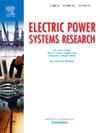基于傅立叶特征的时空图神经网络多站点光伏发电功率预测
IF 4.2
3区 工程技术
Q2 ENGINEERING, ELECTRICAL & ELECTRONIC
引用次数: 0
摘要
多站点光伏发电功率预测是现代电力系统提高电网稳定性和实现可再生能源利用率最大化的关键。然而,由于强烈的时空依赖性、数据异质性和对周期性模式建模的需求,准确的预测是具有挑战性的。为了解决这些挑战,我们提出了一种新的预测框架,将图神经网络(GNN)与基于傅里叶的特征提取相结合。首先,我们构建了一个超变量图,在统一的框架内对多站点光伏发电和数值天气预报数据的时空依赖性进行了联合建模。这种结构有效地捕获了跨越时间和空间的复杂关联。其次,我们结合傅里叶变换模块将时间序列数据投影到频域,便于提取关键周期特征。采用低秩近似来压缩表示,减轻冗余,降低计算复杂度,同时保留主导周期分量并抑制高频噪声。在两个真实PV数据集上进行的大量实验证明了我们方法的有效性。该模型的1步RMSE值分别为0.0267和0.0228,比LSTNet、Autoformer和MTGNN等强基线高出35.3%。结果表明,该模型具有较好的预测精度、泛化能力和可扩展性,适合现代电力系统的实际应用。本文章由计算机程序翻译,如有差异,请以英文原文为准。
Spatio-temporal Graph Neural Network with Fourier features for multi-site photovoltaic power forecasting
Multi-site photovoltaic (PV) power forecasting is crucial for modern power systems, enhancing grid stability and maximizing renewable energy utilization. However, accurate forecasting is challenging due to strong spatiotemporal dependencies, data heterogeneity, and the need for periodic pattern modeling. To address these challenges, we propose a novel forecasting framework integrating Graph Neural Networks (GNN) with Fourier-based feature extraction. First, we construct a hyper-variable graph to jointly model the spatiotemporal dependencies of multi-site PV generation and numerical weather prediction (NWP) data within a unified framework. This structure effectively captures intricate correlations across time and space. Second, we incorporate a Fourier transform module to project time-series data into the frequency domain, facilitating the extraction of key periodic features. A low-rank approximation is employed to compress representations, mitigate redundancy, and reduce computational complexity while preserving dominant periodic components and suppressing high-frequency noise. Extensive experiments on two real-world PV datasets demonstrate the effectiveness of our approach. The proposed model achieves 1-step RMSE values of 0.0267 and 0.0228, respectively, outperforming strong baselines such as LSTNet, Autoformer, and MTGNN by up to 35.3%. These results confirm the model’s superior forecasting accuracy, generalization ability, and scalability for practical deployment in modern power systems.
求助全文
通过发布文献求助,成功后即可免费获取论文全文。
去求助
来源期刊

Electric Power Systems Research
工程技术-工程:电子与电气
CiteScore
7.50
自引率
17.90%
发文量
963
审稿时长
3.8 months
期刊介绍:
Electric Power Systems Research is an international medium for the publication of original papers concerned with the generation, transmission, distribution and utilization of electrical energy. The journal aims at presenting important results of work in this field, whether in the form of applied research, development of new procedures or components, orginal application of existing knowledge or new designapproaches. The scope of Electric Power Systems Research is broad, encompassing all aspects of electric power systems. The following list of topics is not intended to be exhaustive, but rather to indicate topics that fall within the journal purview.
• Generation techniques ranging from advances in conventional electromechanical methods, through nuclear power generation, to renewable energy generation.
• Transmission, spanning the broad area from UHV (ac and dc) to network operation and protection, line routing and design.
• Substation work: equipment design, protection and control systems.
• Distribution techniques, equipment development, and smart grids.
• The utilization area from energy efficiency to distributed load levelling techniques.
• Systems studies including control techniques, planning, optimization methods, stability, security assessment and insulation coordination.
 求助内容:
求助内容: 应助结果提醒方式:
应助结果提醒方式:


